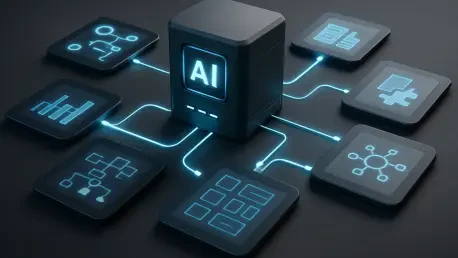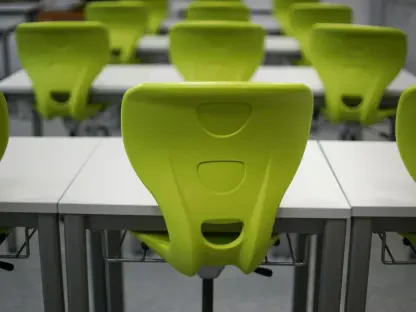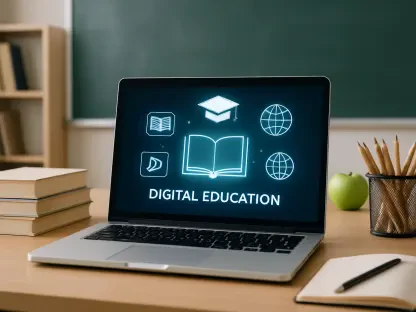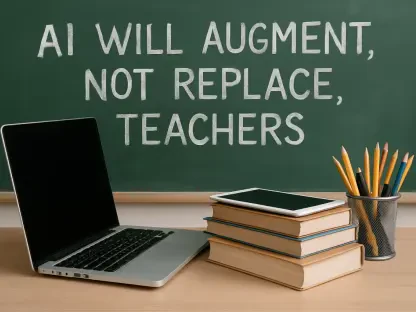Camille Faivre is a leading expert in education management, especially recognized for her work supporting the development and launch of open and e-learning programs in the evolving educational landscape. As institutions adapt post-pandemic, Camille’s insights into integrating technology like AI tools in education are invaluable. In this interview, we explore the current trends in AI use among students, the benefits and challenges of these technologies, regional differences in adoption, and the crucial role of educators in enhancing AI-driven learning.
How are AI tools commonly being used by students in their studies according to the recent survey?
AI tools have become popular companions for students, finding utility across various subjects. According to recent surveys, many students use these tools to brainstorm essay ideas, hone their language skills, and tackle challenging math problems. Their adoption is widespread, with most students leveraging AI to assist in subjects like English and mathematics where they can receive immediate feedback or assistance.
Which subjects do students find AI most helpful for, and why?
Students particularly find AI useful in English/language arts, mathematics, and, to a lesser extent, history. In language arts, AI assists in improving writing quality and clarifying complex texts. For math, AI helps break down difficult formulas and explain concepts, providing a scaffold for understanding more advanced topics. History students use AI to summarize texts or generate essay outlines, simplifying the often dense material they work with.
What specific tasks do students commonly use AI tools for within these subjects?
In English classes, students frequently employ AI for tasks like editing essays, checking grammar, and organizing their writing. Math students use AI tools to solve equations and provide step-by-step explanations, which can be invaluable when handling complex problems. For history, the tools are often used to condense information or propose essential points for assignments.
What are the potential benefits of using AI tools in education?
AI offers significant benefits in education by providing tailored support and learning at students’ own paces. In language arts, AI can enhance writing and grammar skills, offering suggestions and corrections instantly. For math, it can demystify complex problems, enabling students to comprehend and apply concepts more effectively. Overall, AI adds value by creating a personalized and accessible learning experience.
How do AI tools assist with language arts tasks like writing and grammar?
AI tools are helpful in language arts by facilitating text analysis, offering grammar and spell checks, and improving stylistic elements in writing. These tools provide detailed feedback that helps students refine their writing skills, suggesting syntactical improvements and expanding vocabulary usage, thus elevating their overall writing quality.
In what ways do AI tools help with understanding math concepts?
AI tools enhance math learning by providing immediate, step-by-step solutions to problems, visual aids, and interactive explanations that deepen understanding. They often include simulations or visualizations that make abstract concepts more tangible, helping students grasp foundational principles that are critical for progressing in mathematics.
What are the limitations or challenges associated with the use of AI tools in education?
The use of AI tools does come with drawbacks, such as the risk of inaccurate information. AI often lacks the nuanced understanding necessary to offer contextually valid answers, which necessitates that students cross-verify facts. Moreover, over-reliance on AI can hinder the development of independent problem-solving skills and critical thinking.
Why is it important for students to double-check AI-generated information?
Double-checking AI-generated information is crucial because AI can sometimes misinterpret data or provide factually incorrect responses. Verifying such information ensures that students maintain a high quality of work and avoid the pitfalls of over-reliance on technology for correct answers without understanding the underlying concepts.
What risks do students face if they rely too heavily on AI without critical evaluation?
Heavy reliance on AI without critical evaluation can lead to a lack of deep learning and understanding. It risks fostering a passive learning attitude where students accept information without questioning, thereby impairing their ability to analyze, cross-check, and synthesize knowledge independently.
How does AI usage vary across different regions in the United States?
There’s considerable variation in AI usage across the U.S. Students in states like Arkansas, Mississippi, and Texas are utilizing AI more consistently compared to their counterparts in states like Illinois, Nevada, and Oregon. These differences could be influenced by varying access to technology and differing educational policies and resources available in each state.
Which states report the highest levels of AI use among students, and what might influence this?
Arkansas, Mississippi, and Texas report the highest levels of AI use. Factors influencing this might include state educational initiatives promoting technology, the availability of digital learning programs, and possibly a greater focus on integrating technology into everyday learning processes in these states.
What states have lower engagement with AI tools, and why could this be the case?
States such as Illinois, Nevada, and Oregon have shown lower engagement with AI tools. Reasons might include less emphasis on digital learning integration, varying levels of funding for technological resources, or disparities in student access to necessary devices and stable internet connectivity crucial for AI tools.
How does the use of AI differ between college students and high school students?
College students are more frequent users of AI tools and tend to verify AI-generated content more diligently compared to high school students. This diligence could be attributed to the academic rigor at the college level which requires accurate and well-researched work, encouraging students to use AI responsibly.
Why might college students be more diligent in verifying AI-generated content?
College students often face stricter academic standards and the consequences for misinformation or citing incorrect data can directly impact their academic standings. Hence, they’re more incentivized to diligently verify AI-generated content to ensure accuracy and maintain academic integrity.
How do patterns of AI tool usage differ between these groups?
College students use AI more for sophisticated tasks like research, complex problem-solving, and content creation, whereas high school students may utilize these tools for straightforward problem-solving or grammar checks. The difference reflects the diverse academic demands and expectations placed on these two groups.
What role does teacher and tutor engagement play in complementing AI tools for learning?
Teacher and tutor engagement is indispensable in guiding the use of AI tools effectively. Educators help students interpret AI feedback, formulate critical queries, and foster a deeper understanding of material. They provide mentorship and human interaction that AI cannot substitute, ensuring the technological assistance supports genuine learning.
How can educators provide the necessary guidance that AI tools alone cannot offer?
Educators provide indispensable human insight, contextual understanding, and emotional support that AI tools cannot replicate. They encourage critical thinking, facilitate complex discussions, and adapt teaching strategies to meet diverse student needs, ensuring technology complements rather than replaces essential teaching elements.
What are some ways teachers can incorporate AI into their teaching while ensuring critical thinking?
Teachers can incorporate AI by using it to simulate real-world scenarios, prompt exploratory discussions, and encourage students to evaluate AI conclusions critically. By assigning projects that require verification of AI-generated data, educators can foster critical evaluation skills and independent thinking in their students.
How early are students beginning to engage with AI technology?
Students are engaging with AI technology earlier than ever, with some starting as young as four years old, particularly noticeable in regions like China. This early exposure aims to cultivate familiarity with technology from a young age, setting the foundation for future learning and proficiency with digital tools.
What is the significance of the “AI arms race” beginning at age 4 in places like China?
The “AI arms race” beginning at such a young age signifies a push towards integrating technological literacy from the onset of formal education. This strategy aims to equip the younger generation with essential digital skills needed in a tech-driven future, fostering adaptability and innovation from a young age.
How might early exposure to AI tools shape students’ future learning approaches?
Early exposure to AI can profoundly shape a student’s approach to learning, promoting a mindset that embraces technology as a learning partner. Students may become more adept at leveraging digital tools for creative, analytical, and problem-solving tasks, potentially leading to heightened innovation and productivity in their educational pursuits and beyond.
What is your forecast for the role of AI in education?
AI will likely continue to transform education by offering more personalized learning experiences and freeing educators to focus on higher-order teaching tasks. The key will be integrating AI to complement human teaching rather than replace it, ensuring technology enhances rather than overshadows the educational experience.









